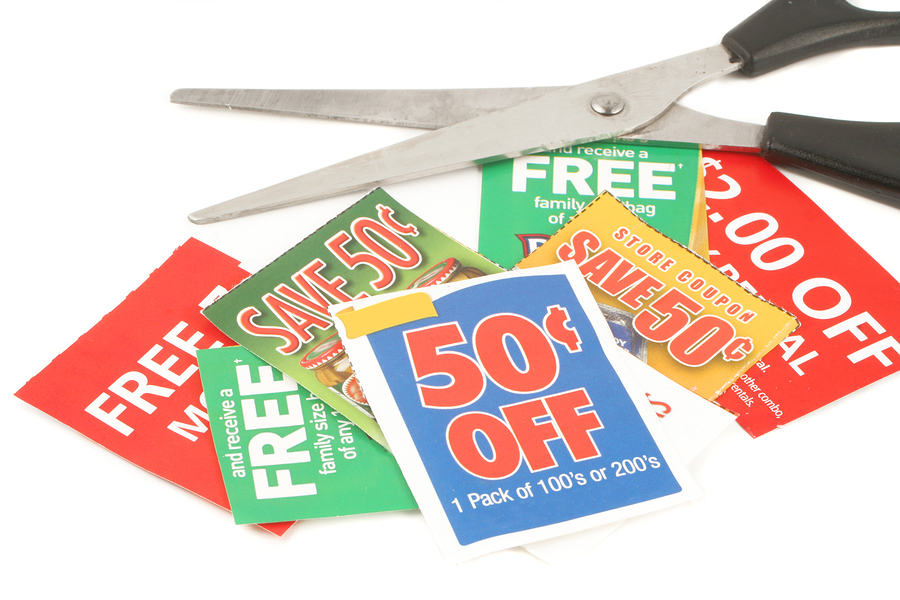HOW TO USE COUPONS
Budget-conscious shopping involves mastering the strategic use of coupons to save money. Issued by manufacturers or retailers as a fundamental aspect of sales promotions, these money-saving vouchers are not just about securing discounts on specific items; instead, they are designed to guide consumers toward a broader purchasing experience. Understanding how to use coupons to save money becomes paramount in sorting through the layers of this financial strategy. Manufacturers may utilize coupons to introduce new products or bolster sales for existing ones, while retailers leverage them to attract customers and instill brand loyalty. The intricate dance between consumers seeking economic advantages and businesses aiming to drive sales unfolds as individuals grasp the nuances of employing coupons to trim costs on targeted items and as catalysts, enticing shoppers to explore a spectrum of products and engage in supplementary purchases.
In adopting a frugal lifestyle, integrating key frugal living tips becomes paramount. One essential tactic revolves around understanding how meal planning saves you money. By organizing meals, you not only minimize food waste but also optimize your grocery spending. Another aspect involves learning how to use apps to save on groceries. These apps serve as valuable tools, providing discounts, cashback, and exclusive deals, contributing to significant savings on your grocery expenses. These frugal living tips create a holistic approach, guiding you toward financial mindfulness and prudent spending habits.
Coupons wield considerable potential in bolstering your savings, but navigating their realm requires discernment, as not all coupons guarantee a good deal. Coupons can be a game-changer in optimizing your expenses, from groceries to various purchases. However, it’s important to exercise caution, as not every coupon equates to substantial savings. The intricacies of distinguishing between advantageous and less favorable deals will be explored further in the subsequent discussion.
So, keep reading to unravel the secrets of maximizing your savings and making the most of the couponing journey – because not all coupons are created equal, and knowing the difference can significantly impact your pocket.
HOW TO USE COUPONS TO SAVE MONEY
If you want to know how to use coupons to save money, you must recognize that not every coupon you encounter guarantees actual savings. When you spot a coupon, take a moment to consider the broader context – often, the manufacturer or retailer is orchestrating a sale. The intention behind the coupon might extend beyond a straightforward discount on a specific item. Manufacturers and retailers strategically issue coupons as part of a sales promotion to entice customers to participate in the ongoing sale events. It’s not just about the immediate cost reduction but rather the hope that you, as a consumer, will be lured into the store, enticed by the discounted item, and make more purchases than initially anticipated.
Coupon usage dynamics extend beyond the voucher’s face value; they are embedded in a larger strategy to enhance sales and customer engagement. Therefore, a thoughtful approach to couponing involves assessing the immediate savings and understanding the underlying motives behind the coupon issuance. By being mindful of the strategic interplay between coupons and sales promotions, consumers can navigate these scenarios more adeptly, making informed choices that align with their budgetary goals.
WHEN DOES A COUPON SAVE YOU MONEY?
Understanding when a coupon genuinely saves you money, it’s crucial to recognize that every coupon, on the surface, presents a discounted price. However, the pivotal question remains: when does a coupon translate into actual savings for the consumer? To solve this inquiry, let’s start at the beginning. The discounted price offered by a coupon becomes a genuine money-saving opportunity when it aligns with your intended purchase and consumption patterns—the effectiveness of a coupon hinges on its relevance to your needs and preferences. A discount may seem enticing, but the coupon’s value is for a product or service you wouldn’t usually use. Therefore, the strategic evaluation of coupons goes beyond their face value, extending to understanding how well they complement your lifestyle and purchasing habits.
MOST PEOPLE SHOP FOR CERTAIN ITEMS
Individuals embark on their grocery shopping journeys with a well-defined shopping agenda. This level of premeditation goes beyond a mere general list; it often involves a specific item coupled with a preference for a particular brand name. As shoppers stroll through the aisles, a distinct dichotomy emerges in brand loyalty. On one side, there are those unwavering in their commitment to specific brand names, refusing to consider generic alternatives, their choices driven by a trust cultivated over time. On the other side of this spectrum, a different group of consumers deliberately avoids specific brand names, opting for alternatives due to personal preferences, ethical considerations, or as a means of diversifying their consumption patterns. The dynamics at play here underscore the intricate balance individuals strike between their specific needs, brand loyalties, and the factors influencing their decisions as they strive to fulfill their shopping objectives.
IF YOU ARE STUCK ON A BRAND NAME
When faced with a steadfast attachment to a particular brand name, a common occurrence among consumers, it’s essential to acknowledge the nuances of individual preferences. Recognizing that everyone has distinct inclinations, especially regarding specific items, there’s a practical approach for those dedicated to particular brand names. In pursuing cost savings without compromising preferences, it’s advisable to actively seek out coupons tailored to the desired item and brand. Individuals will likely find opportunities to save money on their preferred products by leveraging these targeted coupons. This strategic coupling of brand loyalty with couponing aligns with personal tastes. It presents a practical means to optimize expenses, ensuring that adherence to specific brand names comes at a relatively low cost. In essence, this pragmatic approach allows consumers to enjoy the best of both worlds – indulging in their preferred brands while capitalizing on money-saving opportunities through thoughtful coupon utilization.
THE OTHER STUFF
When venturing into the everyday essentials where brand allegiance holds less sway, cost savings becomes a nuanced endeavor. Take, for instance, a ubiquitous item like macaroni and cheese, where numerous companies produce this pantry staple. If you find yourself among those who believe they all taste alike, the key to economical shopping lies in seeking out the least expensive brand. However, it’s crucial to acknowledge that in certain instances, such as when a product is already at its lowest price, finding a coupon may prove challenging. In this scenario, using a coupon to purchase a more expensive brand of macaroni and cheese may lead to a higher overall cost. The astute approach, therefore, involves not only considering the initial discount but meticulously evaluating the final price after the coupon application. By scrutinizing the post-coupon cost, consumers can make informed decisions about which option is the least expensive, ensuring that the pursuit of savings aligns seamlessly with their budgetary goals.
BUYING THE MORE EXPENSIVE TO USE A COUPON TO SAVE MONEY
When contemplating purchasing a more expensive item to leverage a coupon for cost savings, it’s imperative to understand the final price and compare it to the lower-priced item. If the motivation behind opting for a pricier alternative is to ultimately achieve a final cost lower than the item you typically purchase, a critical analysis of the post-coupon price becomes needed. Comparing the price of the higher-cost item after applying the coupon allows consumers to ascertain whether the perceived deal still holds its value. The essence of this evaluation lies in determining whether the overall expense, factoring in the coupon discount, aligns with the original intention of saving money. This approach encourages consumers to go beyond the allure of the initial discount and engage in a discerning assessment of the actual cost-effectiveness, ensuring that the pursuit of savings through coupon utilization remains a strategically sound financial choice.
TAKE AWAY
The key takeaway in any shopping endeavor is the imperative need to compare prices consistently. In a marketplace inundated with discounts, promotions, and coupon offers, it becomes paramount to scrutinize the cost of items thoroughly. The fundamental question that echoes through this process is whether you are genuinely securing a good deal. This vigilant comparison goes beyond the immediate allure of discounts, urging consumers to assess the overall value proposition. By adopting this habit of price comparison, shoppers can navigate the labyrinth of choices more effectively, ensuring that every purchase aligns with their budgetary goals and that the perceived deal stands up to scrutiny. The takeaway is a call to arms for consumers to be discerning, constantly questioning the actual worth of their purchases and reinforcing that genuine savings stem from informed decision-making rather than mere perceptions of a bargain.
CONCLUSION
In conclusion, it’s pivotal to recognize that the art of using coupons extends far beyond reaching the checkout counter with the expectation of substantial savings. Successfully navigating the realm of couponing involves:
- A strategic approach.
- Understanding the nuances of each discount.
- Aligning them with your specific needs and preferences.
It’s not just about the coupon itself but how to use coupons to save money effectively. By diving into the details of each promotion, considering brand preferences, and evaluating the true cost-effectiveness of discounts, consumers can master the intricacies of coupon utilization. The key lies in being mindful, discerning, and proactive, ensuring that each coupon translates into meaningful savings and contributes to an overall savvy and budget-conscious shopping experience.



